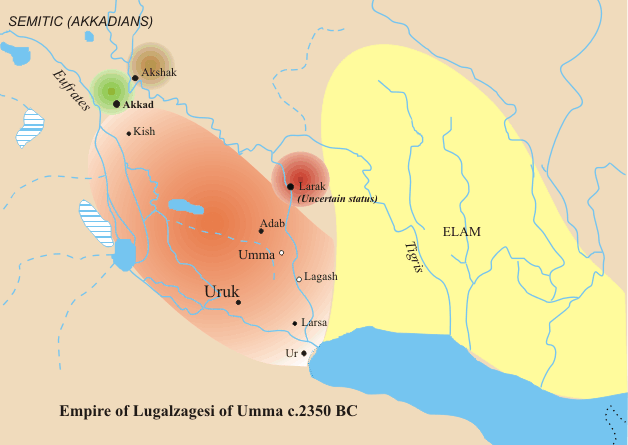
| AKSHAK
Approximate location of Akshak (in brown). Akkad before expansion appears in green. The territory of Sumer under its last king Lugal-Zage-Si appears in red. Circa 2350 BC Akshak (Sumerian: akšak) was a city of ancient Sumer, situated on the northern boundary of Akkad, sometimes identified with Babylonian Upi (Greek Opis). Its exact location is uncertain. Classical writers located it where the Tigris and Euphrates rivers are closest together and it was mentioned along with Kish in early records. Archaeologists in the 1900s placed Akshak at the site of Tel Omar (or Tel Umar) where a pair of sites straddles the Tigris, but that turned out to be Seleucia (possibly earlier Upi/Opis) when it was excavated by LeRoy Waterman of the American Schools of Oriental Research, though a fragment with the name Akshak was found there. Michael C. Astour placed it on the Tigris, on what is now the southern outskirts of Baghdad.
History
:
Source :
https://en.wikipedia.org/ |
